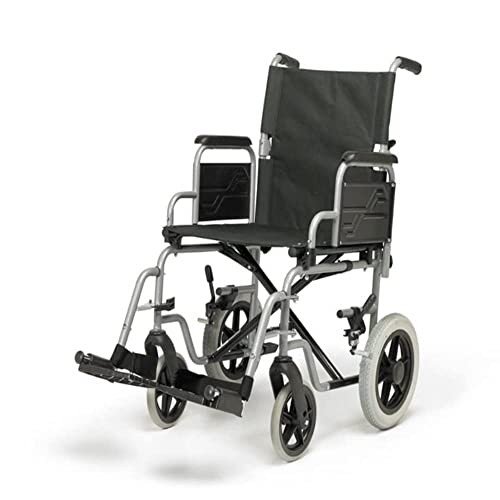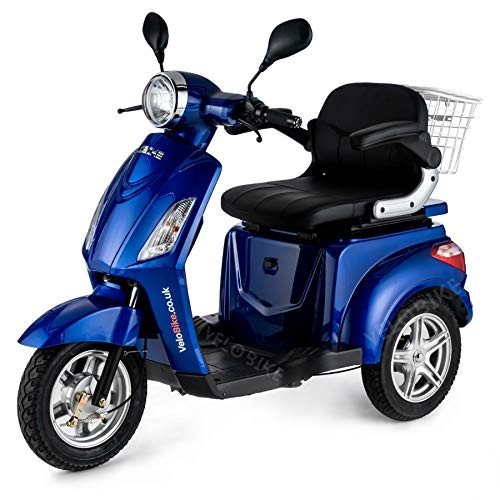Navigating the Journey: A Comprehensive Guide to Buying a Mobility Scooter
In an era where mobility is critical, the significance of ease of access tools like mobility scooters can not be overemphasized. These devices use self-reliance and liberty to individuals who might otherwise find it challenging to walk around. Whether you're a senior wanting to preserve an active way of life, somebody recovering from an injury, or a person with a disability, a mobility scooter can be a game-changer. This guide intends to offer an extensive summary of the factors to consider when buying a mobility scooter, ensuring you make an informed and confident decision.
Comprehending Mobility Scooters
A mobility scooters for sale scooter is a battery-powered gadget developed to assist people with mobility problems. They are available in numerous types, each tailored to different requirements and environments. The main elements of a mobility scooter include the frame, motor, battery, and controls. They can be classified into 3 main types:
- Travel Scooters: Compact and light-weight, these scooters are designed for easy transport and storage. They often feature functions like disassemblable parts, making them ideal for travel.
- Front-Wheel Drive Scooters: These are typically more economical and ideal for indoor and smooth outdoor surface areas. They are ideal for short ranges and casual usage.
- Rear-Wheel Drive Scooters: Built for durability and power, these scooters are best rated mobility scooter for outdoor usage and longer ranges. They use much better stability and can deal with rougher surface.
Key Factors to Consider
When buying a mobility scooter, a number of aspects must be taken into consideration to guarantee it fulfills your specific needs and choices.
Intended Use
- Indoor vs. Outdoor: Determine where you will mostly use the scooter. Indoor scooters are normally lighter and more maneuverable, while outdoor scooters are developed for sturdiness and can handle rougher surfaces.
- Distance: Consider the optimum distance you need to take a trip. Some scooters mobility for sale have a range of just a few miles, while others can increase to 30 miles or more on a single charge.
Size and Weight
- Frame Size: Ensure the scooter is the best size for you. Adjustable seats and tillers (steering columns) can enhance convenience and fit.
- Weight Capacity: Check the weight capacity of the scooter to ensure it can safely support your weight.
Battery and Charging
- Battery Type: Most scooters use lead-acid or lithium-ion batteries. Lithium-ion batteries are lighter and have a longer lifespan but are more expensive.
- Charging Time: Consider the length of time it requires to charge the battery and whether you have access to a convenient charging place.
Features and Accessories
- Seating: Look for a comfortable, adjustable seat with excellent back assistance.
- Storage: Some scooters come with baskets or storage compartments for bring personal items.
- Security Features: Features like headlights, taillights, and brakes can boost safety, especially for outside use.
Spending plan
- Cost: Mobility scooters can vary from a few hundred to numerous thousand dollars. Set a budget plan and look for models that offer the best worth for your cash.
- Upkeep: Consider the continuous expenses of maintenance, such as battery replacement and regular servicing.
Actions to Buying a Mobility Scooter
Research study and Compare
- Online Reviews: Read reviews from other users to get an idea of the scooter's performance and reliability.
- Maker Websites: Visit the websites of respectable producers to find out more about their products and client support.
Test Drive
- Local Dealerships: Visit local dealerships to test drive different models. This will assist you get a feel for the scooter's handling and convenience.
- Ask Questions: Don't hesitate to ask the sales representative about the scooter's features, upkeep requirements, and warranty.
Speak With a Healthcare Professional
- Medical Advice: If you have particular medical conditions, seek advice from a healthcare expert to guarantee the scooter fulfills your requirements.
Think About Insurance and Assistance
- Insurance: Check if your health insurance coverage covers the expense of a mobility scooter.
- Government Assistance: Some government programs offer monetary help for mobility help.
Make the Purchase

- Service warranty: Ensure the scooter comes with a detailed guarantee that covers both parts and labor.
- Shipment and Setup: Arrange for delivery and setup if the scooter is not portable.
FAQs
Q: What is the distinction in between a mobility scooter and a power wheelchair?

- A: A mobility scooter is normally utilized for outside and longer distances, while a power wheelchair is better for indoor use and has a smaller sized turning radius. Mobility scooters are usually easier to operate and have a more open style, whereas power wheelchairs use more support and are much better for users with minimal upper body strength.
Q: How do I select the right size mobility scooter?
- A: Measure your height and weight to make sure the scooter can accommodate you easily. Try to find models with adjustable seats and tillers to tailor the fit. Test driving the scooter can likewise help you figure out if it is the ideal size.
Q: Can I utilize a cheapest mobility scooters for sale scooter on public transport?
- A: Many mass transit systems, including buses and trains, are equipped to accommodate mobility scooters. Nevertheless, it's a good idea to inspect the particular standards and requirements of your local transit authority.
Q: How often do I need to charge the battery?
- A: The frequency of charging depends upon the battery type and the range you take a trip. A lot of scooters can go 10-30 miles on a single charge. It's a great practice to charge the battery after each usage to keep its life expectancy.
Q: What maintenance is needed for a mobility scooter near me for sale scooter?
- A: Regular upkeep includes checking the battery level, tire pressure, and brake function. It's also important to clean the scooter and keep it devoid of debris. Follow the maker's standards for more in-depth upkeep instructions.
Buying a mobility scooter is a considerable financial investment that can greatly boost your quality of life. By considering the elements described in this guide, you can discover a scooter that fulfills your requirements and offers the flexibility and independence you deserve. Whether you're exploring the outdoors or browsing your daily routine, a well-chosen mobility scooter can be a reliable companion on your journey.
Extra Resources
- Mobility Scooter Reviews: Websites like Consumer Reports and MobilityScooterExpert provide in-depth evaluations and comparisons of various models.
- Regional Support Groups: Join local support groups for individuals with mobility problems to share experiences and get recommendations.
- Government Programs: Check with local government firms for programs that provide monetary support for mobility aids.
By taking the time to research and make an informed decision, you can enjoy the lots of advantages of a mobility scooter and continue to live an active and satisfying life.